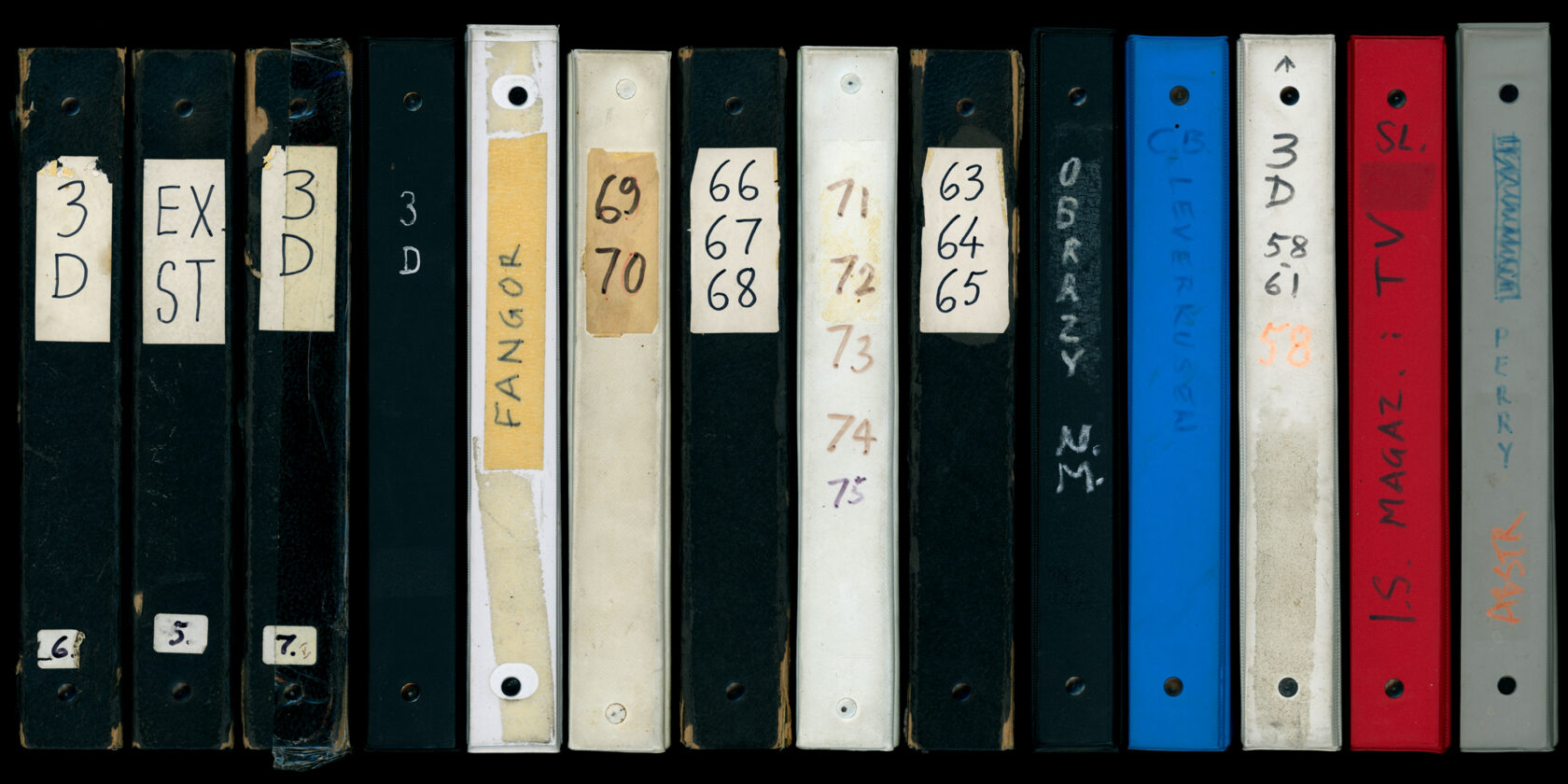
Archives
Wojciech Fangor’s archive is the main source of scientific research into the artist’s life and work. The chronology of the collection covers a wide temporal range of materials – from genealogical documents from the end of the 19th century to the contemporary publishing activity of the Foundation. The central part of the collection is Wojciech Fangor’s private collection documenting all fields of his artistic and exhibition activity, research in the field of environmental art, astronomy or theoretical mathematics, as well as academic scholarships, images of home and studio spaces, and networks of professional and social relations.
The scale of the archive is a particular testament to Wojciech Fangor’s care in maintaining the integrity of the documentation of his own artistic oeuvre, preserved in large numbers despite the artist’s numerous migrations across Europe and the US from the 1960s to the end of the 20th century. Inaugurated in 2020 at the Museum of Modern Art in Warsaw, the long-term research programme on making the Wojciech Fangor Archive accessible contributes to the gradual expansion of the reception of the artist’s oeuvre, emphasising the importance and influence of archives on the creation of scholarly discourse and new forms of reading Fangor’s artistic output.
Wojciech Fangor Archive
The Wojciech Fangor Archive, which had been in the possession of private heirs since the artist’s death, was deposited in 2020 at the Museum of Modern Art in Warsaw, with the aim of sorting it out, processing it, digitising it and making it available to a wide range of scholars as well as enthusiasts of his work. In November 2022, on the centenary of the artist’s birth, the first part of the Wojciech Fangor Archive was published on the website artmuseum.pl in the Artists’ Archive of the Museum of Modern Art in Warsaw. Going beyond the field of painting, the presented collection emphasises aspects of Fangor’s practice treating space as an artistic material. Providing an insight into the artist’s process of research and theoretical reflection, the Archive shifts the focus from art functioning as decoration to art built on clear intellectual foundations.
The archive includes a collection of correspondence, biographies, published and unpublished manuscripts, lectures, notes, press cuttings, interviews, photographs, videotapes, drawings, mock-ups, publications, periodicals, catalogues, printed material from exhibitions, pamphlets, contracts, financial and court documents, decorations, family heirlooms, personal objects.
Time range: 1922–2015 (bulk 2nd half of 19th century–2024)
Languages: Polish, English, German